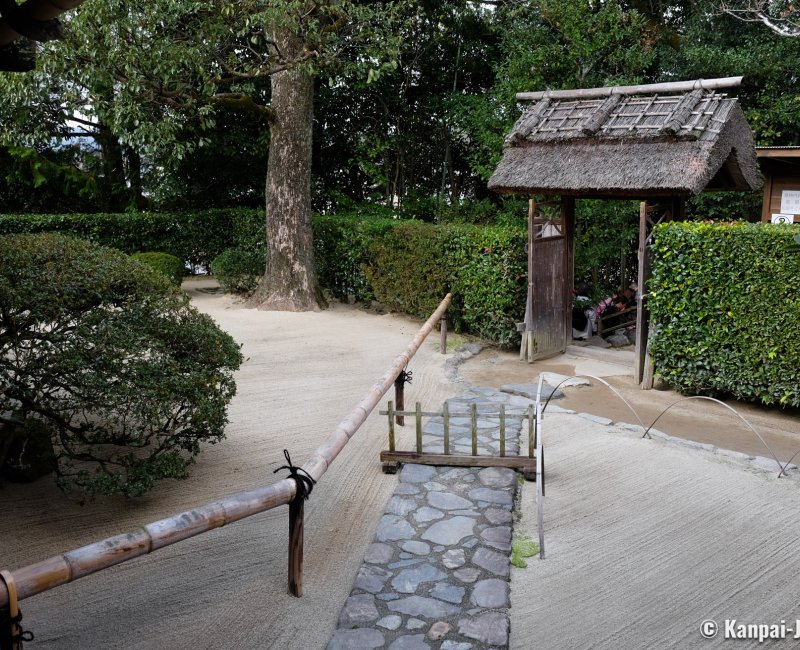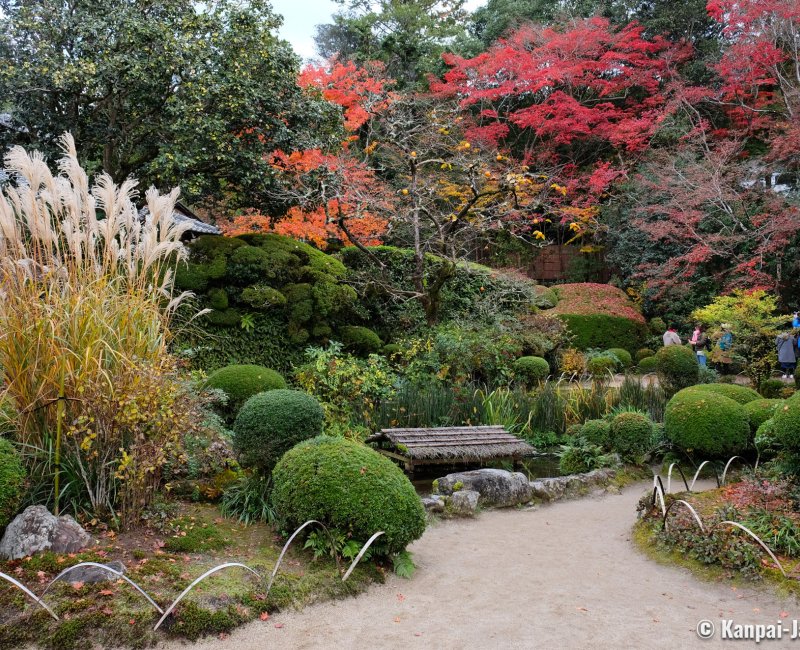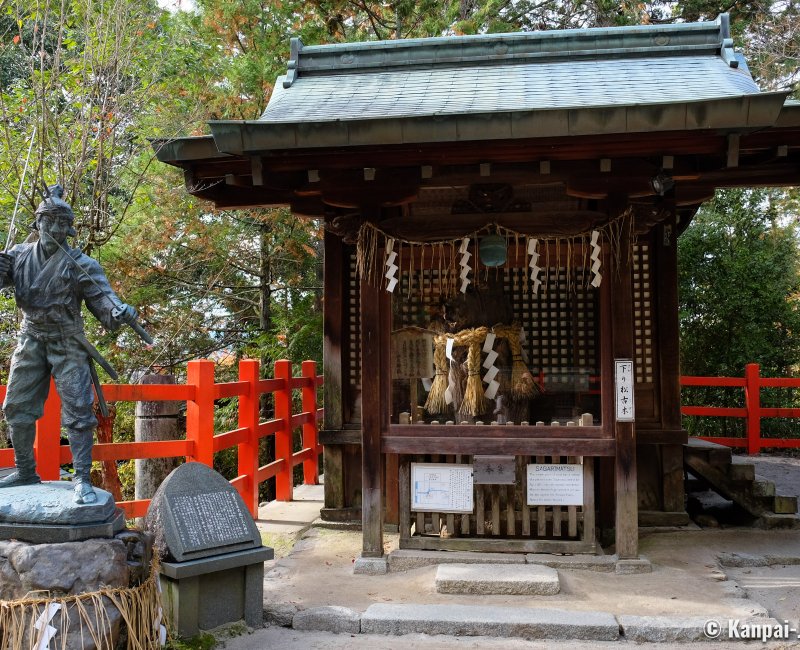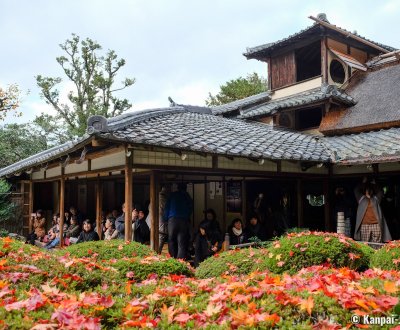Shisen-do
Jozan Ishikawa’s 4 Seasons Garden
Shisen-do is a Buddhist temple of the Soto sect located in the mountains of Ichijoji district, in the north-east of Kyoto. In the early 17th century, it also was former samurai and philosopher monk Jozan Ishikawa’s residence, where he spent his later days. The pavilion has a dry garden to contemplate all year round, and especially in spring for its azaleas then in autumn for the reddening of maple foliage.
Shisen-do is one of the most famous and popular temples in Ichijoji district, located in the north-east of Kyoto. At about 15 minutes’ walk from the nearest station on the Eizan Line, a small bamboo grove introduces to the place. After several gates and stone stairways, the main pavilion and its garden are in view.

A retirement villa in the north-east of the imperial city
Prior to becoming a temple of the Soto sect, Shisen-do was owned by Jozan Ishikawa (1583 – 1672). In his younger days, he was a vassal warrior of the Tokugawas, and he retired to become a Zen Buddhist monk. He eventually settled on the heights of Heian-kyo, the imperial capital at the times and future Kyoto, were he had his hermitage built in 1641.
The retirement villa displays a traditional architecture with a partially thatched roof, and shelters several rooms open to the visit, such as:
- Shisen-no-ma: The main room from where to watch the garden, whose name could be translated as "the poets’ room". Jozan Ishikawa was an adept Chinese literary classics amateur and selected the 36 portraits of remarkable Chinese poets that decorate the room ; and,
- Shogetsu-ro: the narrow upper level of the house, adorned with a round window to admire the Moon.

A dry landscaped garden
The residence’s karesansui dry garden, designed by Jozan himself in a display of his talents as a landscaper, is the primary touristic attraction of Shisen-do. The usual rocks were substituted by rhododendrons bushes and taking a walk in the garden is allowed, which is quite rare for a stone garden that is usually to be admired from a distance, like a painting. At the bend of a path, the fountain shishi-odoshi invites to watch and listen carefully to the sozu bamboo stick filling up with water and tilting with a sound.
With a Zen beauty quiet all year round, the garden attracts visitors during the 2 transitional seasons of colors changing:
- At the end of spring 🌸 (late May to early June), for the blooming of the azaleas; and,
- In autumn 🍁 (late November to early December) when the Japanese maple trees turn red.
In summer, the lush green vegetation provides a much needed coolness and in winter the garden is delicately covered by snow.

Following the path of Miyamoto Musashi in Ichijoji
When exiting the temple, it is recommended to continue exploring the area following the footprints of samurai Miyamoto Musashi (1584 - 1645) who walked these premises in the early 17th century to duel the masters of the Yoshioka school of sword-fighting. A few meters away from Shisen-do, the grounds of Hachidai-jinja shrine shelter a small pavilion dedicated to the famous swordsman. The trunk of the Sagarimatsu pine tree is preserved here. Musashi hid behind the tree to surprise his opponent Yoshioka Matashichiro and defeat him by hitting his head with a sword.
Renowned for his fighting style with 2 swords, the samurai also trained a long time under the waterfall of Tanukidani-san Fudo-in temple, a little bit further up in the mountain. Nowadays, these sites are deemed sacred and girdled by a shimenawa cord, and people interested in Musashi’s epic story visit them in a pilgrimage in Kyoto.

